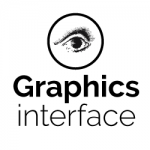Kellogg Booth’s career has been dominated by an unwavering belief that Canada – and its researchers, artists and companies – could make a serious and positive impact on the evolution of digital media. It is his relentless pursuit of this vision that makes him a true Canadian Digital Media Pioneer.
On paper, Kellogg Booth would appear to be a computer scientist. Strictly speaking, having done his MA (1970) and doctorate (1975) in that field, that is a true statement. However, an examination of how he has conducted his career makes it clear that that characterization is far too limited. His colleagues and students were as likely to be artists, designers, social scientists or entrepreneurs as software or hardware engineers. Interdisciplinary research has been fundamental to his work, reflecting his deep conviction that digital technologies were best viewed in terms of their human, social and cultural context. Yes, technological innovation has been a key part of his work, but the vision was always on technological innovation’s place in the larger mosaic of human society.
This is evident right from the start of his career in Canada when, between 1977-1990, along with John Beatty, and later Richard Bartels and other colleagues, he helped make the University of Waterloo one of the top centres of excellence in computer graphics in the country – which Rick Beach, his first PhD student, co-supervised with Beatty, described as “a welcome oasis for Canadian computer graphics research.” On moving to the University of British Columbia (UBC), he became the founding Director of the Media and Graphics Interdisciplinary Centre (MAGIC), which bridged across the many different faculties within the university, as well as to outside organizations – especially in the arts.
In 2004, Booth helped to organise a cross-disciplinary network of seven Canadian universities to develop design-oriented analyses of what people do and need in various organizational settings, and then to create technologies, products, and provide studies to disseminate the results of their experiments: the Network for Effective Collaboration Technology through Advanced Research (NECTAR). During the five years of this network, Booth served as associate director and led the UBC-based activities.
On the completion of NECTAR, he moved immediately into leading a core team of academic researchers and partners from industry and the public sector that organized a Network of Centres of Excellence: Graphics, Animation and New Media Canada (GRAND), for which he was the scientific director from December 2009 to June 2015.
Today, he is still an active researcher and professor at UBC, and as much of an activist in helping the country meet its potential in digital media, including serving as a director on the board of Wavefront, a government, academic and corporate consortium devoted to accelerating the growth and impact of Canadian wireless innovation, as well as an adjunct professor at the Centre for Digital Media (CDM), a centre run jointly by the British Columbia Institute of Technology, Emily Carr University of Art and Design, UBC, and Simon Fraser University.
Along the way, Booth has authored/co-authored first rate research papers on collaboration technology, HCI, interaction techniques, computer graphics and animation, and he has mentored numerous students (and artists).
In 1991, Booth offered some advice to students in the SIGGRAPH Career Handbook. It included “Choose a school and a department where you will have good colleagues. It is difficult to work alone. In computer graphics it is very difficult to work alone.” In a way, his career is the mirror image of this advice. By being a great colleague himself, and by setting the bar thus, attracting more of the same, and therefore almost never having to work alone – or without a smile – he has opened doors for others.
It is hard to imagine a single individual working in the field over the past 40 years who has done as much to foster Canadian excellence in new media research than Kellogg Booth. He has consistently been a selfless advocate, leader, mentor, and practitioner in the field. As such, he is a true Canadian Digital Media Pioneer.
Biography
Dr. Kellogg S. Booth is a Professor of Computer Science at the University of British Columbia. His research interests, which date back to 1968, include human-computer interaction, computer-supported cooperative work, user interface design, visualization, computer graphics, and the analysis of algorithms.
He received his BS in mathematics in 1968 from Caltech, and his MA in 1970 and doctorate in 1975 from the University of California Berkeley, both in computer science. In parallel with graduate school, he worked at Lawrence Livermore National Laboratory, where he was a staff member from 1968-1976. In 1977 he came to Canada, where he joined the faculty of the Department of Computer Science at the University of Waterloo. In 1990 he moved to the University of British Columbia, where he has been ever since. His energy shows no sign of waning – his Berkeley-acquired activism seemingly as strong as ever.
Throughout his career, Booth has been involved in a number of interdisciplinary research projects. He was founding director of MAGIC, the Media and Graphics Interdisciplinary Centre at UBC (1990-2002), and served for five years as associate director of the federally funded Network for Collaboration Technology through Advanced Research (NECTAR), and then five years as scientific director of Graphics, Animation and New Media Canada (GRAND), a federally funded Network of Centres of Excellence.
He has been a visiting scientist at Tektronix Laboratories (1980), a visiting professor at the University of California Santa Cruz (1985), and an adjunct scientist at the New Media Innovation Centre of British Columbia (2001-2002). He is a former chair of ACM SIGGRAPH (1985-89), and served as conference co-chair for SIGGRAPH ’83 and as the past chair of the organization (1989-93). He has served on numerous conference program committees including the ACM CHI, I3D, SIGGRAPH, and UIST conferences, and of course the Canadian Graphics Interface for which he served as general co-chair in 1992, co-chair of the program committee in 1998, and general chair in 2005. He has received numerous awards, including being a fellow of the British Columbia Advanced Systems Institute from 1992-2004, receiving the Canadian Human-Computer Communication Society’s Achievement Award in 2008, being named an ACM Distinguished Scientist in 2009, and receiving the ACM SIGGRAPH Outstanding Service Award in 2010.
Selected Works
Nobarany, S, Booth, KS, & Hsieh, G (2015). What motivates people to review papers? The case for the human-computer interaction community. J. Association for Information Science and Technology.
Shoemaker, GA, Tsukitani, T, Kitamura, Y, & Booth, KS (2012) Two-part models capture the impact of gain on pointing performance. ACM Transactions on Computer-Human Interaction, 19(4) 28 pages.
Fernquist, J, Shoemaker, GA, & Booth, KS (2011). “Oh snap”: Helping users align digital objects on touch interfaces. In Proceedings of INTERACT 2011.
Lanir, J, Booth, KS, & Hawkey, K (2010). The benefits of more electronic screen space on students’ retention of material in classroom lectures. Computers and Education, 55(2):892-903.
Hendy, JC, Booth, KS, & Hawkey, JL (2010). Graphically enhanced keyboard accelerators for GUIs. Proceedings of Graphics Interface. 2010. Ottawa, Ontario. May 31 – June 1, pp. 3-10.
Lanir, J, Booth, KS, & Tang, AT (2008). MultiPresenter: a presentation system for (very) large display surfaces. In Proceeding of the 16th ACM international Conference on Multimedia. Vancouver, British Columbia. October 26-31, pp. 519-528.
Shoemaker, G, Tang, AT, & Booth, KS (2007). Shadow Reaching: A new perspective on interaction for large wall displays. In Proceedings of UIST 2007 – The 20th Annual ACM Symposium on User Interface Software and Technology, October 7-10, Providence, RI, pp. 53-56.
Zheng, Q, McGrenere, JL, & Booth, KS (2006). Co-authoring with structured annotations. In Proceedings of the ACM Conference on Human Factors in Computing (CHI 2006). Montreal, Quebec, April 22-27, pp. 131-141.
Booth, KS, Fisher, BD, Lin, CJR, & Argue, R (2002). The “Mighty Mouse” multi-screen collaboration tool. In Proceedings of UIST 2002 – The 15th Annual ACM Symposium on User Interface Software and Technology, October 27-30, Paris, France, pp. 209-212.
Scharein, RG, Booth, KS, & Little, JJ (2000). Interactive knot theory with KnotPlot. Workshop on Multimedia Tools for Communicating Mathematics. Lisbon, Portugal (November 23-25). Appears in Borwein, J, Morales, MH, Polthier, K, & Rodrigues, JF, editors (2002). Multimedia Tools for Communicating Mathematics. Springer-Verlag: Berlin, Germany, p 277-290.
MacKenzie, CL, Booth, KS, Dill, JC, Inkpen, KM, & Payandeh, S (2000). Evaluating human goal-directed activities in virtual and augmented environments . Proceedings of International Ergonomics Association. (IEA2000)/Human Factors and Ergonomics Society (HFES2000) Congress: Ergonomics for the New Millennium, 1(546).
Arthur, KW, Booth, K S, & Ware, C (1993). 3D task performance in fish tank virtual worlds. ACM Transactions on Information Systems, Special Issue on Virtual Worlds, 11(3):239-265.
Booth, KS, Cowan, WB, Wein, C, & Wein, M (1991). Hardware support for multitasking graphics. Proceedings of Graphics Interface ‘91 (pp. 199-206). Calgary, Alberta.
Booth, KS, Bryden, MP, Cowan, WB, Morgan, MF, & Plante, BL (1987). On the parameters of human visual performance: An investigation of the benefits of antialiasing. IEEE Computer Graphics and Applications, 7(11):34-41.
Booth, KS, Forsey, DR, & Paeth, AW (1986). Hardware assistance for z-buffer visible surface algorithms. IEEE Computer Graphics and Applications, 6(11):31-39.
Beach, RJ, Beatty, JC, Booth, KS, Plebon, DA, & Fiume, EL (1982). The message is the medium: Multiprocess structuring of an interactive paint program. Ninth Annual Conference on Computer Graphics and Interactive Techniques, ACM SIGGRAPH ‘82 (pp. 277-287). Boston, Massachusetts.
Wetherall, CS, Buckholtz, TJ, & Booth, KS (1972). A director for Kriegspiel, a variant of chess. The Computer Journal, 15(1):66-70.






